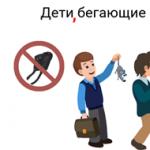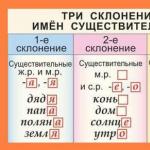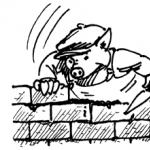Do we expect other cultures to adopt our customs or are we willing to adopt theirs? This might translate to how business or even foreign relations are to be conducted. Do we compromise or force others peoples to deal only on our terms? We may not have time to hear a language, but taking time to learn the «signals» is a powerful communicator.
As the global village continues to shrink and cultures collide, it is essential for all of us to become more sensitive, more aware, and more observant to the myriad motions, gestures, and body language that surround us each day. And as many of us cross over cultural borders, it would be fitting for us to respect, learn, and understand more about the effective, yet powerful «silent language» of gestures.
The world is a giddy montage of vivid gestures- traffic police, street vendors, expressway drivers, teachers, children on playground, athletes with their exuberant hugging, clenched fists and «high fives». People all over the world use their hands, heads, and bodies to communicate expressively.
Without gestures, our world would be static and colorless. The social anthropologists Edward T. Hall claims 60 percent of all our communication is nonverbal. In that case, how can we possibly communicate with one another without gestures?
Gestures and body language communicate as effectively as words- maybe even more effectively. We use gestures daily, almost instinctively, from beckoning to a waiter, or punctuating a business presentation with visual signals to airport ground attendants guiding an airline pilot into the jet way or a parent using a whole dictionary of gestures to teach (or preach to) a child.
Gestures are woven inextricably in to our social lives, but also that the «vocabulary» of gestures, can be at once informative and entertaining... but also dangerous. Gestures can be menacing (two drivers on a freeway), warm (an open-armed welcome), instructive (a police man giving road directions0, or even sensuous (the liquid movement of a Hawaiian hula dancer).
Bear in mind that the following gestures are in general use, but there may always be exceptions. In recent years, Western and contemporary values and ideas have become more popular and has either influenced, altered, and even replaced, some of the more traditional gestures, understanding human behavior is tricky stuff. No two people behave in precisely the same way. Nor do people from the same culture all perform exactly the same gestures and body language uniformly. For almost any gestures there will probably be a minority within a given nationality who might say «Well, some might attach that meaning to it, but to me it means...» and then they will provide a different interpretation.
In the world of gestures, the best single piece of advice is to remember the two A’s – «Ask» and be «aware.» If you see a motion or gesture that is new or confusing, ask a local person what it signifies. Then, be aware of the many body signs and customs around you.
People socialize all the time when they are not alone even if they are keeping silence. This non-verbal communication is possible because we use body language, unconsciously accept it and respond to it.
Body language is an important part of any interaction, so every person should develop an ability to read other people signals and interpret them so as to be aware of their unconscious feelings and emotions.
Body language isn`t always just one movement. Very often it is more than one, but you can be assured that if your non-verbal signals are out of kilter with your spoken message, the people listening to you will feel uncomfortable, or may not believe, or may not be interested, etc.
Here is a list of some body-language habits and their interpretations:
- running fingers through the hair - a person is unsure, frustrated or angry;
- sitting back with both hands behind the head - he knows it all;
- tight-lipped with both hands on hips - aggressive;
- rubbing the earlobe - a person is nervous or doubtful;
- legs crossed, arms tightly folded - your counterpart is annoyed or defensive;
- hair-twisting - nervous;
- stroking the chin - he is deep in thoughts;
- foot tapping, fist clenched - your opposite number is dominant and aggressive.
Surely, this is not the whole list of habits which can be observed in day-to-day life. Moreover, I do believe that some of these interpretations are generalized and only partly try as every person is unique and his gestures and body language should be interpreted in a particular situation. I`m personally keen on twisting my hair, thus I can`t say that I`m always nervous. On the contrary, I`m an extremely self-confident person.
However, we shouldn`t underestimate the importance of our body language as it can tell us more, than words can do.
Перевод:
Люди постоянно общаются, даже когда они молчат. Эта невербальная коммуникация возможна благодаря тому, что мы используем язык тела, бессознательно воспринимаем его и отвечаем.
Язык тела - важная часть любого взаимодействия между людьми, поэтому им следует развивать умение "читать и распознавать" сигналы других людей, чтобы знать, какие подсознательные чувства и эмоции испытывают их собеседники.
Язык тела это не одно движение. Чаще всего это ряд каких-то действий. Но вы должны знать, что если ваши невербальные сигналы не соответствуют вашим вербальным сигналам, то т, кто вас слушает, могут почувствовать себя некомфортно, перестанут вам верить или вообще прекратят вас слушать.
Вот список основных жестов и их интерпретация:
- гладит себя по волосам - человек неуверен, испуган или зол;
- сидит, откинувшись на спинку стула, обе руки за головой - он знает все, что вы говорите;
- губы поджаты, обе руки на поясе - он агрессивен;
- теребит мочку уха - человек нервничает или в замешательстве;
- ноги скрещены, руки сложены на груди - ваш собеседник раздражен или защищает себя;
- крутит прядь волос - нервничает;
- подпирает подбородок - размышляет;
- постукивает ногой, сжимает кулак - ваш партнер хочет доминировать или он агрессивен.
Конечно, это не полный список жестов языка тела, которые можно наблюдать в повседневной жизни. Кроме того, я считаю, что толкование некоторых жестов обобщено и верно только частично, так как каждый человек уникален и его язык тела следует интерпретировать в зависимости от конкретной ситуации. Лично я обожаю играть с прядкой волос, но не могу сказать, что я постоянно нервничаю. Наоборот, я очень уверенный в себе человек.
Тем не менее, нам не следует недооценивать важность языка жестов, так как он может показать нам намного больше, чем расскажут просто слова.
Лёвина Карина
УлГУ, Ульяновск, Россия
Сочинение на английском языке с переводом. Номинация Люди и общество.
Secrets of Gestures and Body Language
People socialize all the time when they are not alone even if they are keeping silence. This non-verbal communication is possible because we use body language, unconsciously accept it and respond to it.
Body language is an important part of any interaction, so every person should develop an ability to read other people signals and interpret them so as to be aware of their unconscious feelings and emotions.
Body language isn`t always just one movement. Very often it is more than one, but you can be assured that if your non-verbal signals are out of kilter with your spoken message, the people listening to you will feel uncomfortable, or may not believe, or may not be interested, etc.
Here is a list of some body-language habits and their interpretations:
- running fingers through the hair - a person is unsure, frustrated or angry;
- sitting back with both hands behind the head - he knows it all;
- tight-lipped with both hands on hips - aggressive;
- rubbing the earlobe - a person is nervous or doubtful;
- legs crossed, arms tightly folded - your counterpart is annoyed or defensive;
- hair-twisting - nervous;
- stroking the chin - he is deep in thoughts;
- foot tapping, fist clenched - your opposite number is dominant and aggressive.
Surely, this is not the whole list of habits which can be observed in day-to-day life. Moreover, I do believe that some of these interpretations are generalized and only partly try as every person is unique and his gestures and body language should be interpreted in a particular situation. I`m personally keen on twisting my hair, thus I can`t say that I`m always nervous. On the contrary, I`m an extremely self-confident person.
However, we shouldn`t underestimate the importance of our body language as it can tell us more, than words can do.
Люди постоянно общаются, даже когда они молчат. Эта невербальная коммуникация возможна благодаря тому, что мы используем язык тела, бессознательно воспринимаем его и отвечаем.
Язык тела - важная часть любого взаимодействия между людьми, поэтому им следует развивать умение "читать и распознавать" сигналы других людей, чтобы знать, какие подсознательные чувства и эмоции испытывают их собеседники.
Язык тела это не одно движение. Чаще всего это ряд каких-то действий. Но вы должны знать, что если ваши невербальные сигналы не соответствуют вашим вербальным сигналам, то т, кто вас слушает, могут почувствовать себя некомфортно, перестанут вам верить или вообще прекратят вас слушать.
Вот список основных жестов и их интерпретация:
- гладит себя по волосам - человек неуверен, испуган или зол;
- сидит, откинувшись на спинку стула, обе руки за головой - он знает все, что вы говорите;
- губы поджаты, обе руки на поясе - он агрессивен;
- теребит мочку уха - человек нервничает или в замешательстве;
- ноги скрещены, руки сложены на груди - ваш собеседник раздражен или защищает себя;
- крутит прядь волос - нервничает;
- подпирает подбородок - размышляет;
- постукивает ногой, сжимает кулак - ваш партнер хочет доминировать или он агрессивен.
Конечно, это не полный список жестов языка тела, которые можно наблюдать в повседневной жизни. Кроме того, я считаю, что толкование некоторых жестов обобщено и верно только частично, так как каждый человек уникален и его язык тела следует интерпретировать в зависимости от конкретной ситуации. Лично я обожаю играть с прядкой волос, но не могу сказать, что я постоянно нервничаю. Наоборот, я очень уверенный в себе человек.
Тем не менее, нам не следует недооценивать важность языка жестов, так как он может показать нам намного больше, чем расскажут просто слова.
Body Language and Communication without Words.
Body language is a form of communication that requires no writing or sound to get across things that you think and feel. Body language is prevalent in all humans whether it is conscious or unconscious. People may be totally unaware of the fact that they are communicating a feeling or idea without actually saying it. Body language though is different depending on culture and location, as all spoken languages are, yet gestures and body language are a silent language that helps to understand one another.
Gestures and body language communicate as effectively as words- maybe even more effectively. For example, a big smile on babies face can say more than a thousand words. It is unnecessary and unimaginable for a baby to say "I"m so happy!" when they are obviously grinning ear to ear. Gestures are, for the most part, learned before any type of language is acquired. .
Anthropologists divide our actions and gestures into three broad categories. The categories include instinctive, coded, and acquired. Instinctive gestures are the actions we make unconsciously, such as smiling when you are happy. Coded gestures are gestures that have been assigned to certain events, such as a referee putting both arms up when a touchdown is scored in football. Acquired gestures are gestures that society has put into place, such as waving with your arm to say good bye.
Coded Gestures are probably the easiest for us Americans to interpret. We have devised certain hand signals to represent "stop," "come here," and insults (such as the middle finger). Sporting events also rely on hand gestures to run more efficiently. Imagine having to yell calls across the field or court. What a mess that would be! Hand gestures and signals can simplify things and make understanding a police man or referee easy.
Instinctive gestures such as smiling or frowning come naturally and are easy to pick up on.
Essays Related to Body Language
1.
Body Language. ... The study of body language is not a new thing, they conceal emotions. ... There are a few basic modes of body language. ... Speaking is body language. ... Body language on the other hand is made up of many different aspects....
- Word Count: 452
- Approx Pages: 2
- Grade Level: High School
2.
Body language is a metod of non-verbal communication. ... Many people use body language as an everyday method of communication. ... A lot of people believe that body language is just a simple hand movement, and or sign language. Body language is more than that. ... There is a lot of information on body language that has been researched. ...
- Word Count: 347
- Approx Pages: 1
- Grade Level: High School
3.
Theses forms of communication are non other than that of body language (kinesics) and paralanguage. Body language is a form of communication through different movements and gestures of the body. ... The use of kinesics (body language) and paralanguage in everyday life is the most prominent use of persuasion we use subconsciously. ... Body language, body idiom, gesture language, organ language and kinesics acts are just some terms used to depict kinesics. In ways that body language works in nonverbal acts, body language parallels paralanguage. ...
- Word Count: 429
- Approx Pages: 2
- Grade Level: High School
4.
The study of body language is called Kinesics. ... Gestures and body language have been called "the silent language" (Axtell 11). ... Body language usually does not lie. ... A lot of body language is hereditary or is taught at a very young age. ... Body language comes to us naturally. ...
- Word Count: 3123
- Approx Pages: 12
- Grade Level: High School
5.
Characteristics of language Definitions of language Many definitions of language have been proposed. Henry Sweet, an English phonetician and language scholar, stated: "Language is the expression of ideas by means of speech-sounds combined into words. ... Normally, people acquire a single language initially "their first language, or mother tongue, the language spoken by their parents or by those with whom they are brought up from infancy. ... Language, as described above, is species-specific to man. ... The science of language is known as linguistics. ...
- Word Count: 8535
- Approx Pages: 34
- Grade Level: Undergraduate
6.
In 1450 English became the language used in?... It was the language of the capital. ... I am walking are not available in many other languages. ... Other languages use SOV and some do not require a particular order. ... Every known aspect of the language experienced change and growth. ...
- Word Count: 1558
- Approx Pages: 6
- Has Bibliography
- Grade Level: High School
7.
Usually body language occurs unconsciously. ... We can learn to use our body language for a purpose. ... Body language is used especially to express feelings. ... Spoken language and body language go mostly hand in hand. ... Most people are not very aware of their body language. ...
- Word Count: 1269
- Approx Pages: 5
- Grade Level: High School
Body language is a form of non-verbal communication, which consists of body posture, gestures, facial expressions, and eye movements. Humans send and interpret such signals almost entirely subconsciously.
When we go for an interview, most of us think carefully about what to wear and what to say but hardly ever about how to act — in other words, what our body language is telling the interviewer.
According to experts, body language accounts for 55% of the effect we have when communicating. Tone of voice accounts for 33% and words just 7% — so what you say matters much less then how you behave.
Employers nowadays are cautious about the fast-talking interviewee but they look increasingly for their signs which will show a person`s character and ability — such as body language. You should always smile when you enter the interview room and when the interview has finished because first and last impressions count.
Moreover, you should also try to maintain eye-contact with the interviewer but not for too long. Once you are sitting down, your hands should generally stay loosely in your lap. Never raise them above shoulder level.
In fact, body language is vital — so, at an interview, take the trouble to get it right.
Язык тела
Язык тела является одной из форм невербальной коммуникации, которая состоит из положения тела, жестов, мимики и движений глаз. Люди отправляют и интерпретируют такие сигналы почти полностью подсознательно.
Когда мы идем на собеседование, большинство из нас тщательно продумывает что надеть и что говорить, но вряд ли мы думаем о том как действовать, — иными словами,
Что наш язык тела может сказать интервьюеру.
По мнению экспертов язык тела составляет 55% от нашей эффективности при общении. Тон голоса составляет 33%, а слова только 7%. Таким образом то, что вы говорите, гораздо менее важно чем то как вы ведете себя.
Работодатели сегодня настороженно относятся к быстро говорящему собеседнику, но они наблюдают более внимательно за знаками, которые покажут характер и способности человека — такие, как язык тела. Вы всегда должны улыбаться, когда вы входите в комнату для интервью, а также когда интервью закончено, так как первое и последнее впечатление особенно важно.
Кроме того, вы также должны стараться поддерживать визуальный контакт с интервьюером, но не слишком долго. Когда вы сидите, ваши руки должны свободно лежать на коленях. Никогда не поднимайте их выше уровня плеч.
На самом деле, язык тела имеет жизненно важное значение — поэтому во время интервью, постарайтесь произвести хорошее впечатление.
- Jesus, or Jesus of Nazareth, also known as Jesus Christ, is Christianity’s central figure, both as Messiah and, for most Christians, as God incarnate. In...
- English is spoken practically all over the world. It is spoken as the mother tongue in Great Britain, the United States of America, Canada, Australia...
- Nowadays, some may hold the opinion that children should begin learning a foreign language as soon as they start school, but others have a negative...
- Today, when English is one of the major languages in the world, it requires an effort of the imagination to realize that this is a...
- Ирландский язык впервые пришел в Ирландию с кельтами во второй половине первого тысячелетия до нашей эры. Ирландский считается кельтским языком, принадлежащим к более крупной семье...
- Education is very important in our life. An educated person is one who knows a lot about many things. He always tries to learn, find...
- There are approximately 5000 different languages and many dialects or local versions of major languages in the world. The oldest written language is Egyptian, but...
- Modern world is becoming smaller all the time. Every day distances between different countries seem less. For this reason it’s becoming more and more important...
- As far as you know, there are lots of languages in the world, and some of them fall into category of international languages or languages...
- Learning a foreign language is not an easy thing. It is a long and slow process that takes a lot of time and efforts. Nowadays...
- Использование лексического подхода очень важно для изучения специализированного английского. Часто возникают сложности с переводом терминологии, необходимой в различных областях знаний. Для того чтобы облегчить изучение...
- Standard variety is the variety of a language which has the highest status in a community or nation and which is usually based on the...
- It is known that people have been learning foreign languages for thousands of years. The ancient Egyptians learned the Greek language 2.5 thousand years ago....
- Этим летом я сдаю выпускные экзамены. Что касается моей будущей профессии, я могу сказать, что уже сделала свой выбор. Я хочу быть преподавателем иностранного языка....
- Все мы хотим достичь совершенства в языках, в первую очередь в немецком. В наше время владение иностранными языками — крайне важное умение, и с этим...


















